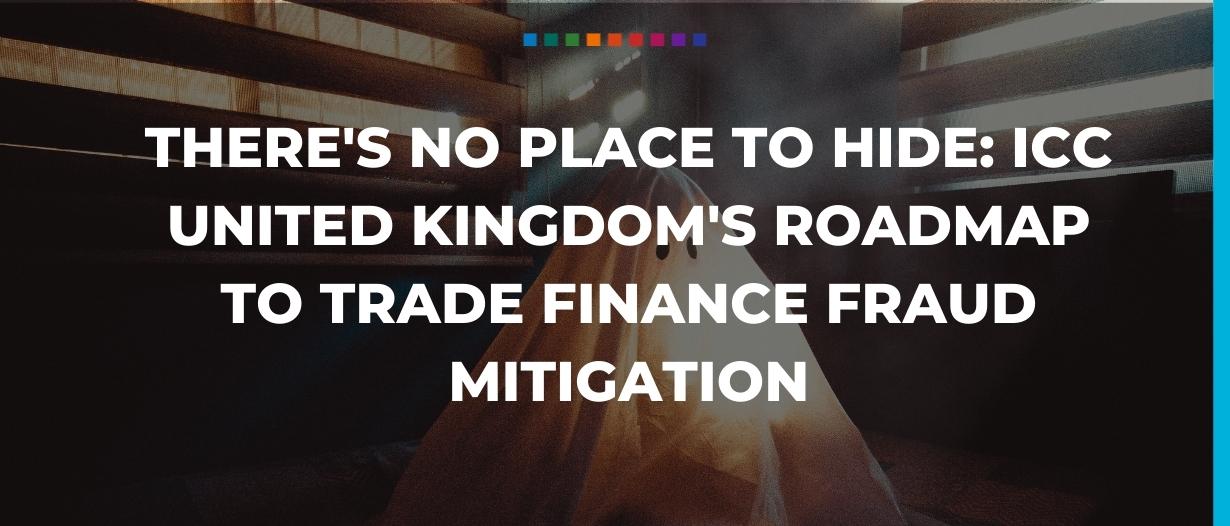Estimated reading time: 5 minutes
International trade is vital for modern society.
It is the economic engine that delivers the coffee you are drinking, the clothes you are wearing, and the iPhone you are holding.
For many importers and exporters, especially those in emerging markets, trade finance is the fuel that allows them to power this engine. It provides the liquidity and working capital necessary, empowering them to make these transactions possible.
But with great power comes great responsibility.
Despite the immense benefit that it affords the global economy, the international trade finance system—particularly the largely paper-based form of it that exists today—is also susceptible to fraud.
To help combat fraud and provide advice to banks, trade associations, governments, and regulators, the International Chamber of Commerce (ICC) UK, Centre for Digital Trade and Innovation, and MonetaGo have released their latest whitepaper: Shutting fraudsters out of trade.
Peter Mulroy, secretary general at FCI said, “The launch of the ICC-Monetago whitepaper provides many stakeholders within the trade finance community practical insights into further securing trade finance globally.
“With the current macroeconomic headwinds, its important that legitimate businesses gain access to ever available dollar within the trade finance ecosystem.”
The many and mysterious faces of fraud
Fraud in international trade can take many forms.
According to the report, some of the most common approaches include
- Multiple financing: when a company finances the same trade with multiple different banks in different jurisdictions.
- Fraudulent documents: when a company manipulates or creates a fake document that does not represent the true nature of the underlying trade.
- Fraudulent legal entities: when bad actors create fake companies in an effort to circumvent counter-terrorist financing measures.
- Vendor impersonation: when a fraudster convinces a company that its supplier has changed bank accounts in order to collect payment themselves.
- Fraudulent diversion of funds: when funds are paid into a common case collection account and then diverted to be used elsewhere.
While industry regulators know that fraud is an issue, it is impossible to pinpoint just how large the scale of the problem actually is—although estimates indicate that it could be as much as 1% of the value of all transactions.
Losses from such fraud generally present themselves in two major ways: 1) an impact on the sheet following the loss event itself, and aggregate reduction of the overall availability of trade finance after the event as financiers become hesitant to continue in the market.
For example, following a string of high-profile fraud-related defaults in Singapore, several large banks—including Société Générale and ABN AMRO—halted their trade finance activities removing more than $20 billion of available liquidity from the market.
While the impact is widespread and potentially significant, trade digitalisation may be the key for a fraud-free future.
Benefits of digitalisation for fighting fraud
Trade digitalisation has been a hot topic in trade circles for a host of reasons, ranging from its promise to increased efficiency to its ability to help promote the United Nations (UN) Sustainable Development Goals (SDG).
Digitalisation also has tremendous promise to help cut back on the level of fraud in the ecosystem.
Largely this stems from the availability of digital data that can be shared between financial institutions and the ability of firms to better manage their digital identities.
Many of the strategies for fraud that exist rely on banks in different countries not being able to effectively communicate with one another as a result of paper processes.
While digital solutions would still need to overcome the challenge of data-sharing regulations, with the right technology in place, banks could be alerted if the invoice they are about to approve for financing has already been financed by another institution.
Digital identity management is another area that will help financial institutions know who exactly it is they are conducting business with (easing the challenges associated with Know Your Customer (KYC) requirements). In addition, it will make it easier for legitimate smaller businesses in developing countries to verify that they are genuine and thus deserving of financing.
Recommendations for the industry
The new report makes several key recommendations for the banking community, trade associations, governments, and regulators.
Banks are encouraged to strengthen the ICC Trade Register, incorporate data authentication within processes, capture the minimum trade metadata from commercial invoices and title documents, conduct ecosystem-level verification, and engage in the G20 roadmap to enhance cross-border payments.
Trade associations should create awareness around the impact of fraud, create best practice guidelines for the business community and banks, and raise awareness of the G20 roadmap to enhance cross-border payments.
Governments need to signal minimum data requirements for VAT-related documentation in trade processes, adopt the World Trade Organization (WTO) and ICC Standards toolkit in governmental digital solutions and cross-border trade pilots, impose legal obligations of content producers, enable goAML, and engage with working groups to widen areas of engagement,
Regulators are advised to take note of the G20 roadmap to enhance cross-border payments and the development of common message formats, data exchange protocols, and standardised data, include trade finance as an industry in new initiatives specific to technology and information sharing, and remove restrictions, guidelines, and requirements that hinder data sharing.
Sean Edwards, chairman at ITFA, said, “I welcome the release of a paper that highlights some of the practical steps we can take in further reducing risks.
“This is not about more regulation or rules, but rather, a recognition of the value trade associations play to share best practices to enable the banking community to thrive.”
To learn more about these recommendations and their expected outcomes, you can find the full report here.

































